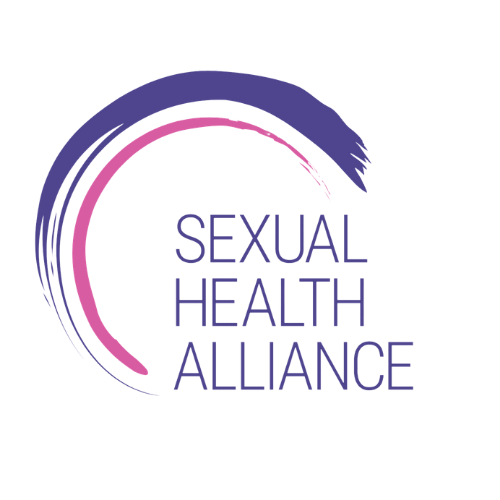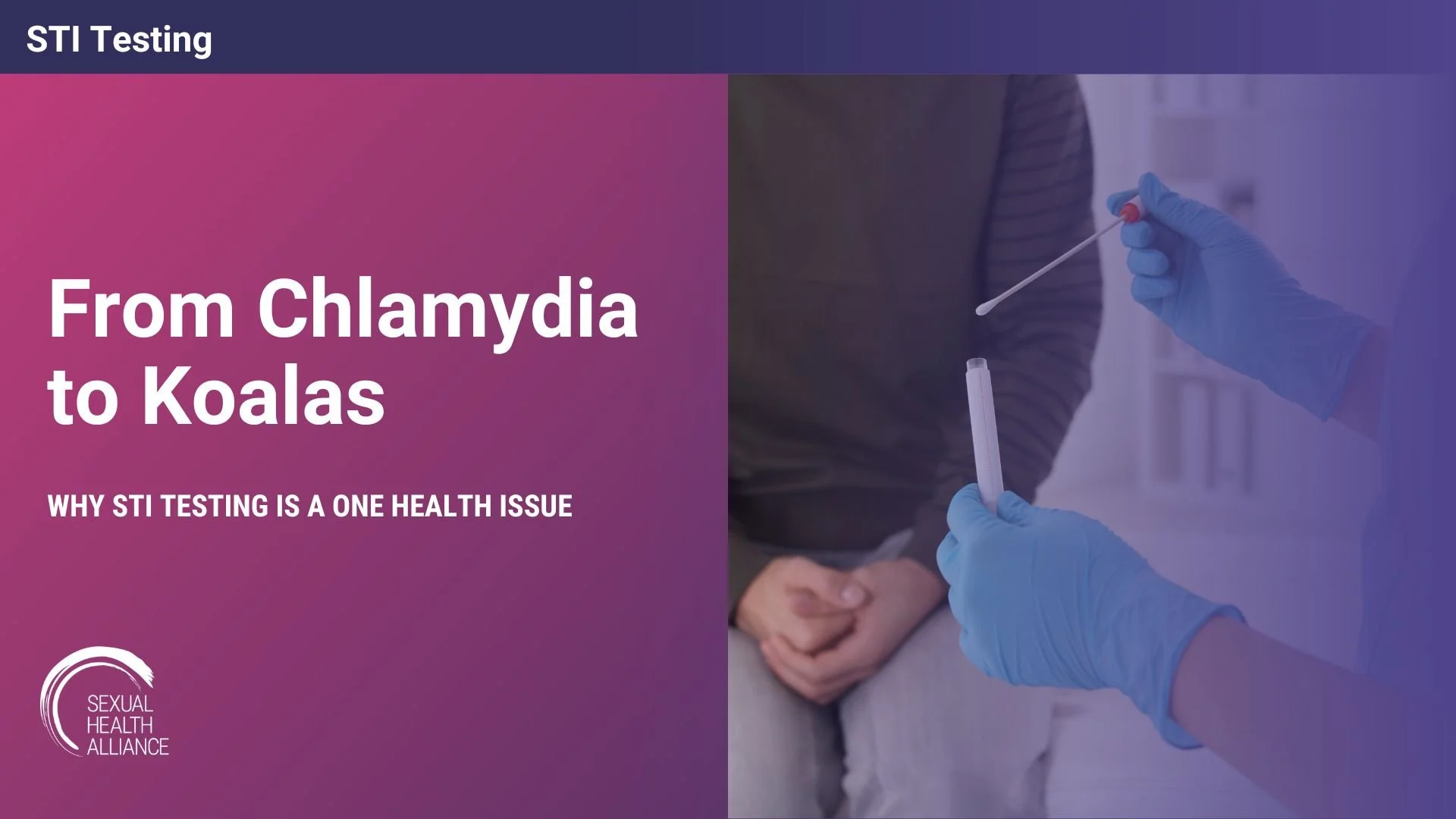No, you can’t get chlamydia from a koala. But getting tested for chlamydia, and other sexually transmitted infections (STIs), can help protect not only yourself and your community, but also the planet itself. Let’s unpack how.
If you caught this year’s season of Love Island, you might remember a contestant confidently claiming that humans can get chlamydia from koalas. While both species are affected by Chlamydia bacteria, they carry distinct strains – there’s no cross-species transmission. Still, this viral moment offers a surprisingly useful teaching tool for sexual health professionals: it highlights just how deeply interconnected human, animal, and environmental health truly are.
Chlamydia: Common, Often Silent, and Persisting
Chlamydia is the most commonly diagnosed STI in the world. Within the US alone, about 1.5 million cases were diagnosed last year, making up about 2 in every 3 STI cases. And this is just the tip of the iceberg.
Because most infections are asymptomatic, many people don’t realize they have chlamydia, which means the true number of infections is estimated to be nearly double of what’s being reported. Young people ages 15-24 account for about half of all new infections, but as we know, anyone who is sexually active is at risk.
Testing remains one of our most effective prevention tools. By encouraging regular STI screening, we can interrupt transmission chains, initiate timely treatment, and prevent long-term health consequences.
Potential long-term health consequences include:
Pelvic inflammatory disease (PID): For those with uteruses, PID can cause hospitalization, chronic pelvic pain, and infertility.
Pregnancy complications: Chlamydia can lead to preterm delivery and may be passed to newborns during childbirth.
Infertility: Infections can cause damage to the fallopian tubes or uterus, and in people with testes, may affect sperm health.
Epididymitis: Infection and inflammation of the epididymis, which can spread to the testicles and cause pain or swelling.
Increased risk of HIV acquisition: Chlamydia infection can heighten susceptibility to HIV and other STIs.
Reactive arthritis: A rare but documented complication that can affect joints, eyes, and the urinary tract.
For providers, reinforcing the message that “testing is caring” helps normalize prevention and reduces stigma – two critical steps in closing the gap between infection and intervention.
When Health Care Meets Climate Care and STI Testing
Here’s where the One Health connection comes in. The One Health approach brings people, animals, and the environment together under one shared goal– sustaining the health of all. It acknowledges that the well-being of humans, animals, plants, and ecosystems are interconnected, and that protecting one ultimately protects them all.
Globally, the health care sector accounts for about 5% of greenhouse gas emissions. Early detection and treatment reduce complications, specialist visits, and medical waste. In contrast, untreated infections often require more intensive care, generating higher costs and greater environmental impacts.
In the U.S. alone, new STIs result in over $16 billion in direct medical expenses annually– a reminder that prevention is not just a personal or public health investment, but an environmental one.
The Growing Threat of Antimicrobial Resistance (AMR)
Gonorrhea, in particular, has become increasingly resistant to nearly all available antibiotics. This is one example of antimicrobial resistance (AMR), which has now been designated an urgent global health threat by the World Health Organization.
And now more attention is being turned to chlamydia. Reports of drug resistance have emerged, including a recent study that reported 1 in 10 chlamydia infections fail treatment with azithromycin.
For our sexual health professionals, this underscores the importance of preventive interventions. Every infection prevented is one less opportunity for resistant strains to emerge, protecting not only future patients but also our shared ecosystems. AMR doesn’t respect species boundaries; it can circulate across humans, animals, and the environment, threatening wildlife and biodiversity.
Vaccines on the Horizon: Lessons from Koalas
Koalas, too, are in the middle of a chlamydia crisis. Their infections cause blindness, infertility, and contribute to declining populations. In response, Australia recently launched a chlamydia vaccination campaign for koalas, which has shown promising protection.
Human vaccine research is advancing as well. Several gonorrhea vaccine candidates are in clinical trials, and some evidence suggests that existing meningococcal B vaccines may offer partial cross-protection.
A new systematic review pulled together research from several countries and found that, depending on the dose, the vaccine provided moderate protection against gonorrhea–between 23% and 47%. However, one study suggested that this protection may start to fade about three years after getting vaccinated.
Researchers are also exploring chlamydia vaccine options for humans. These scientific advances could transform STI prevention– shifting our field from reactive treatment to proactive immunity.
As sexual health professionals, staying up to date on vaccine research prepares us to answer individuals’ questions, build vaccine confidence, and integrate emerging prevention tools into care models.
STI Testing: Shared Challenges, Shared Solutions
Whether it’s people or koalas, barriers to health often look surprisingly similar. For humans, limited access to care, stigma, and systemic inequities still make STI testing harder than it should be, a reality shaped by the long shadow of reproductive injustice and lack of universal health care. And as politics shift, new challenges keep emerging, influencing what kind of sexual health education and services people can actually reach. For koalas, even well-meaning efforts to help can sometimes upset delicate ecosystems, showing just how interconnected these systems truly are.
In both cases, early detection, surveillance, and prevention remain key. When we support testing, counseling, and stigma reduction in our own communities, we’re contributing to global efforts to reduce disease burden– across species and systems.
A One Health Call to Action for STI Testing
Encouraging STI testing doesn’t just protect individuals; it strengthens communities, promotes health equity, and supports planetary well-being. As sexual health professionals, we’re uniquely positioned to bridge these connections– to show that caring for sexual health is also caring for the health of our shared world.
So no, getting tested won’t directly save the koalas. But it might just help protect everything we love– from our relationships to our ecosystems.
Written by Emma Sell-Goodhand, MPH
Emma is a doctoral student and Global One Health Fellow at North Carolina State University studying adolescent sexual health. She brings prior experience as a Technical Advisor at the World Health Organization.
Want to become an in-demand sexual health professional? Learn more about becoming certified with SHA!




